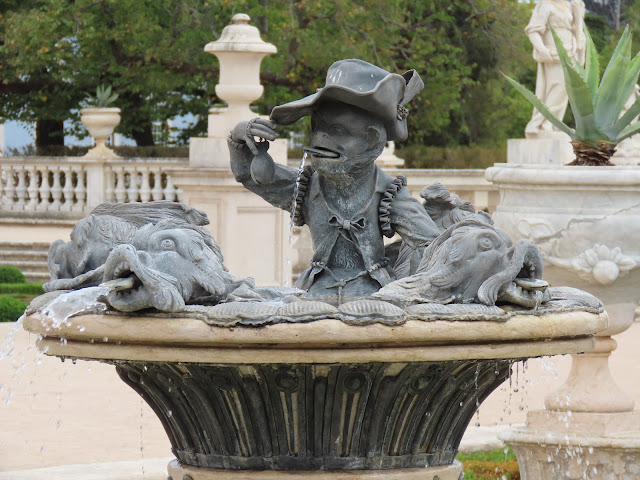11 September 2022
One of the places that are kinda on the must see list when in Lisbon is Sintra and the surrounding attractions. Thought about doing it on public transport but realised that we would spend an awful lot of time getting between sights, so opted for a guided tour.
First stop on the tour was a place known as the devils cauldron, named as because in the winter the surf in here pounds hard enough that the waves break near the top.
Next stop was Cascais. Back in the day Cascais was a pretty little fishing village complete with fort and is now at bit of a tourist hot spot, having said that does still retain a good chunk of its original charm.
The weather though wasn't that great as we were getting hit by the tail end of Hurricane Danielle which meant an erratic mist bank would flow in from the sea.
The next obligatory stop on tour round here is Cabo da Roca, the most westerly point of Europe (used to be somewhere in the UK but since Brexit it's now back here again). Every Sunday thousands of motor bike enthusiasts meet here and guess what we were there on Sunday. So it was a tad busy and noisy but some very cool bikes in the car park.
The next usual stop is Pena Palace however since it is pretty much the palace that all tours go to it would mean queuing for up to an hour so based on advice from our guide we (us and the other 4 people with us) opted for the National Palace of Queluz which was one of the last great Rococo buildings to be designed in Europe, it was conceived as a summer retreat for Dom Pedro of Braganza. The palace and grounds are quite stunning in their opulence. Quite surprised to find that in the early 1900's Portugal become a Republic and the Monarchy simply had their titles removed, rather than their titles, lands and heads. This basically means that a lot of the buildings the Royal family used to own were left intact.
A small river runs through the grounds and this was converted into a pool (by means of concrete, tiles and dropping boards in at the downstream end to retain the water) in which the royalty could swim, or if the fancy took them, go for a row. Sadly Portugal has been in a bit of a drought for the last few years and the river is now a veritable trickle.
Back in town we did some more sightseeing - not quite sure the significance of this but the surrounding area had some very cool murals on the road - think these may have been set up a pedestrian/dining areas.
The Steam punky Santa Justa lift in lower Lisbon shuttles people (and tourists for a good fee) 45m up as the terrain here is particularly challenging.
First consisting of an animal-powered inclined rail lift, work began in 1900 to replace that with a vertical elevator. Inaugurated by King Carlos in 1901 and fully operational in 1902. Originally powered by a steam engine, the elevator motor was converted to cleaner electric operation in 1907.
At the top of the steam punk lift is the ruins of the Carmo Convent. The Covent was pretty much wiped out by a magnitude 9 earthquake in 1755 and the ruins of the Convent were left in their current state as a reminder of that event.
The other sight we wanted to check out was the Jerónimos Monastry at Belem and the nearby Belem Tower but in a case of bad planning neither were open on the day we choose to see them, but decided to have a look anyway. On the way to see Belems tower we spotted this a submarine powering it's way out of Lisbon Harbour. V cool.
In 1515 a rhinoceros was delivered to King Manuel I. He was a less than charming fellow as for entertainment he decided to watch a fight between the rhino and an elephant - no body told the elephant it was meant to be the natural enemy of a rhinoceros and he wandered off. Manuel become bored with the rhino and in an attempt to curry favour had it sent to Pope Leo the 10th as a gift. Sadly never made it to Rome and died when the ship carrying it sunk.
Said rhino inspired a famous engraver Albrecht Dürer the trouble was he never actually saw the rhino, only had it described to him. Didn't stop the engraving called "Dürer’s Rhinoceros" becoming famous all over Europe.
From here we head inland to Evora - home of some Megaliths.




























No comments:
Post a Comment